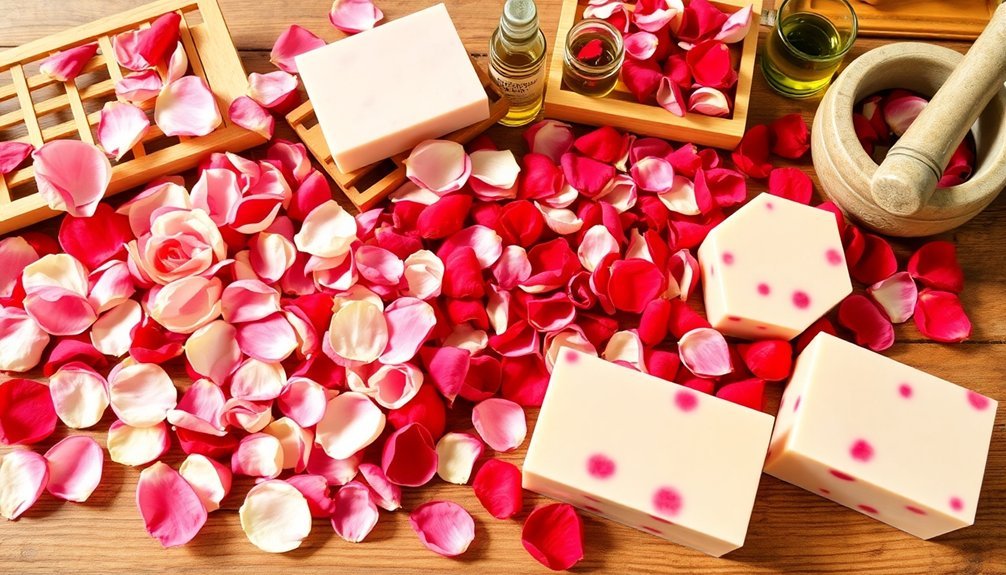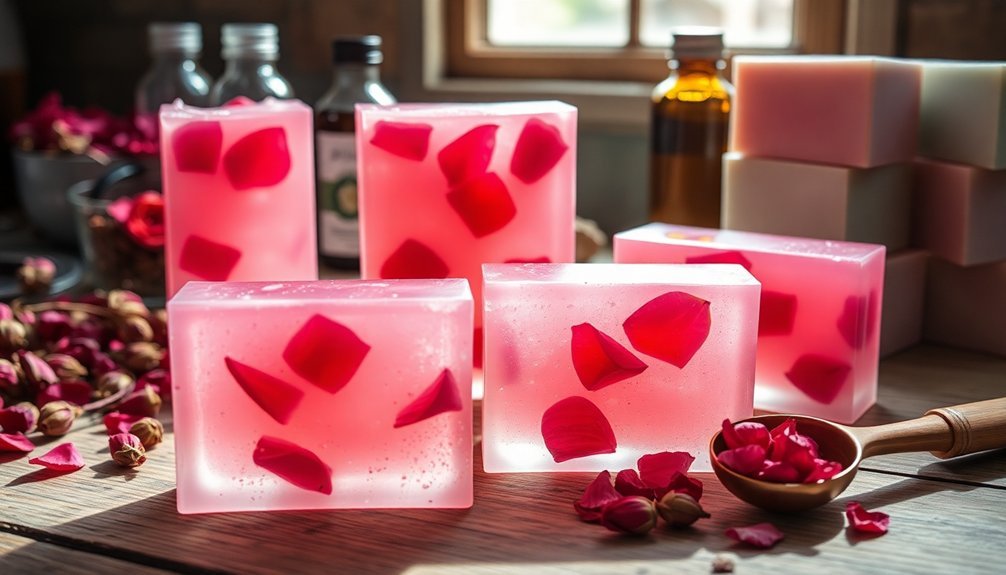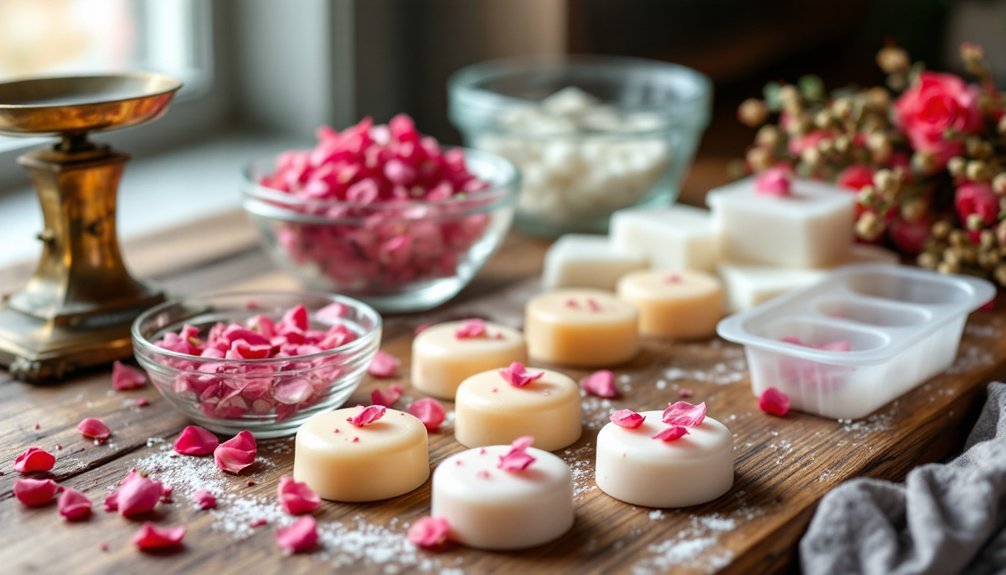When making rose petal soap, you'll get best results by using dried petals instead of fresh ones in cold process recipes, as fresh petals often turn brown during saponification. For melt-and-pour soap, make certain petals are completely dry before embedding them between layers to create a suspended effect. Consider making a rose petal infusion by steeping petals in hot water to enhance fragrance naturally. These simple techniques will help you create beautiful, aromatic soaps from your very first batch.
Choosing and Preparing Rose Petals for Beautiful Soap

When selecting rose petals for soap making, freshness matters tremendously. Gather recently bloomed petals and let them sit uncovered for several hours so any insects can escape before incorporating them into your handmade soap.
For the best results in cold process soap recipes, prepare a rose petal infusion by pouring hot water over your petals and steeping for 10-20 minutes. After straining, you'll have beautifully scented pink water that adds natural fragrance.
You can also use dried rose petals for texture and visual appeal, though be aware they may turn brown or black over time. To maintain color, consider mixing in dried calendula petals, which hold their vibrant hue better.
If fresh petals aren't available, substitute a blend of rose water and distilled water for your soap base.
Preventing Petal Discoloration in Cold Process Soap
Despite their beauty in gardens, fresh rose petals often disappoint in cold process soap, turning an unappealing brown or black during saponification. To prevent discoloration, switch to powdered dried petals instead, which create a lovely speckled appearance while maintaining their color integrity over time.
When adding these to your cold process soap, use only ½ tablespoon per batch to achieve an attractive, balanced look without overwhelming your creation.
Store your dried petals in a cool, dark place before use to preserve their natural hues.
For additional visual interest, consider combining with calendula petals, which resist browning during the saponification process.
Remember to completely avoid fresh petals in your soap recipes if you're hoping to showcase the natural beauty of roses.
Techniques for Embedding Rose Petals in Melt-and-Pour Soap

The beauty of melt-and-pour soap lies in its transparency and versatility for showcasing delicate elements like rose petals. Before starting, verify your rose petals are completely clean and dry to maintain soap quality.
Begin by melting your soap base until fully liquid, then stir in a few drops of colorant. Pour a thin initial layer into your mold and let it set slightly. This creates a foundation for your dried rose petals, which you'll sprinkle on top before adding the remaining soap. This layering technique keeps petals suspended rather than sinking to the bottom.
For best aesthetics, always use dried rose petals instead of fresh ones, which can discolor over time.
Allow your creation to cool completely at room temperature or briefly refrigerate to expedite the setting process.
Frequently Asked Questions
Can You Put Fresh Rose Petals in Soap?
No, you shouldn't put fresh rose petals in soap. They'll discolor and ruin your soap's appearance over time. Use dried rose petals instead, which maintain their color better, or rose essential oil for fragrance.
What Are the Ingredients in Rose Petal Soap?
You'll need coconut oil, olive oil, sunflower oil, lye, and rose petal infusion as primary ingredients. For enhancement, add rosehip seed oil, jojoba oil, shea butter, and essential oils like geranium or rose absolute.
How to Prevent Dried Flowers in Soap From Turning Brown?
You'll prevent flowers from browning in soap by using powdered dried petals, incorporating calendula, reducing water content, storing materials in cool dark places, and possibly adding complementary colorants to enhance their natural appearance.
What Does Rose Soap Do for Your Skin?
Rose soap hydrates and soothes your skin with moisturizing ingredients. It tightens pores, reduces oil, and protects against free radicals. You'll also enjoy its stress-reducing aroma and improved skin tone from enhanced circulation.
In Summary
You're now ready to create stunning rose petal soaps! Remember to dry your petals thoroughly, use glycerin for preservation, and consider pH-sensitive options for vibrant colors. When working with cold process, protect petals with glycerin or place them strategically. For melt-and-pour, guarantee your timing is perfect—not too hot, not too cool. With these techniques, you'll craft beautiful, fragrant soaps that showcase nature's elegance in every bar.





Leave a Reply